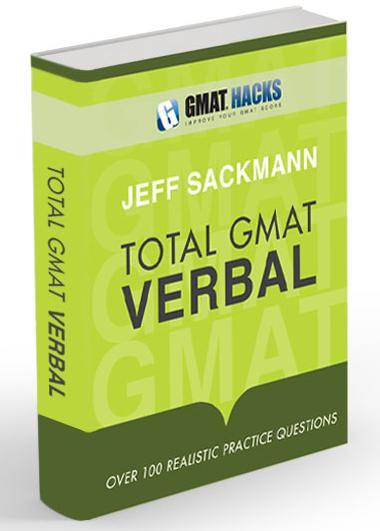
Bookshelf
|
|
Total GMAT Math Jeff's complete Quant guide, on sale now! |
|
|
Total GMAT Verbal Everything you need to ace GMAT Verbal! |
1,800 Practice Math Questions
Buy Jeff's books at Amazon.com

GMAT Official Guide, with IR
OG Math | OG Verbal
OG12 & Quant Rev solutions!
GMAT Question of the Day
Beginner's Guide to the GMAT
GMAT Hacks Affiliate Program

Recent Hacks

Categories
- General Study Tips
- Goals and Planning
- CAT Strategy
- The Mental Game
- GMAT Math Strategy
- GMAT Math Topics
- Mental Math
- Data Sufficiency
- Critical Reasoning
- Reading Comprehension
- Sentence Correction
- Analytical Writing Assessment
- Integrated Reasoning
- IR Explained
- Business School Admissions
- GMAT Prep Resources
- Practice Questions
- Total GMAT Math
- Total GMAT Verbal
- GMAT 111

Bullet Points, Lists, and Sentence Correction
August 9, 2010
| You should follow me on Twitter. While you're at it, take a moment to subscribe to GMAT Hacks via RSS or Email. |
Imagine you are creating a generic PowerPoint slide, illustrating the benefits of a new initiative. It might look something like this:
The benefits will include increased
Look at the grammatical style. Any of the bullet points could follow "increased," and the result would be a complete sentence.
The Grammar of Lists
I'll bet you never thought you'd learn anything about Sentence Correction from PowerPoint, did you?
As it turns out, this is one of the best ways to think about parallelism on the GMAT. The related issues of parallelism, lists, and similarity are among the most commonly tested in Sentence Correction items.
A simple way of thinking about the grammar of lists is: you should be able to turn list items into bullet points. In other words, you should be able to rewrite the sentence to look like the PowerPoint slide above ... only a bit more complicated.
Here's a sample SC question from Total GMAT Verbal:
Translating the recently discovered Levantine tablet fragments will increase our understanding of Imperial Aramaic, shed light on dialect differences in the fourth-century BCE, and aid research into proto-Pahlavi writing systems.
This sentence clearly includes a list. To see whether it is correct as written, think back to the bullet points.
The Branching Point
Unless the list is the at the very beginning of the sentence (which is rare), there is a "last word" before the list begins. I call this the "branching point."
In the fake PowerPoint slide, that word is "increased." There's "increased sales," "increased efficiency," and so on. Finding the branching point is more complicated in a long, unfamiliar sentence like the sample question above, but it's still there.
In the example, the branching point is "will." Let's rewrite the sentence in bullet-point format:
Translating the recently discovered Levantine tablet fragments will
- increase our understanding of Imperial Aramaic,
- shed light on dialect differences in the fourth-century BCE, and
- aid research into proto-Pahlavi writing systems.
In this format, isn't it easier to tell whether the list items are parallel? The verbs are neatly lined up, and if you care to check, you can read the sentence from the branching point straight to the second or third list item.
This example is correct. Imagine how easy it would be to spot if it were incorrect! If "aid" were replaced by "aiding," you would see "fragments will aiding..." and immediately recognize the error.
Practice branching
Converting SC questions into branching points and bullets takes practice. But you're working through SC problems anyway, right? The more you use this technique, the more natural it will become. And, of course, the more your score will improve.
About the author: Jeff Sackmann has written many GMAT preparation books, including the popular Total GMAT Math, Total GMAT Verbal, and GMAT 111. He has also created explanations for problems in The Official Guide, as well as 1,800 practice GMAT math questions.
 |
Total GMAT Verbal
The comprehensive guide to the GMAT Verbal section. Recognize, dissect, and master every question type
you'll face on the test. Everything you need, all in one place, including 100+ realistic practice questions. |